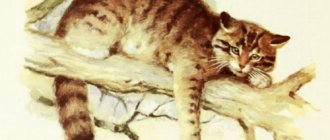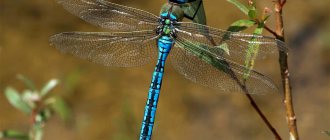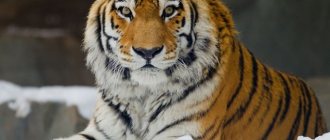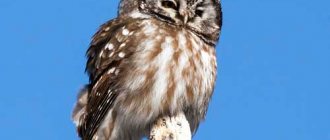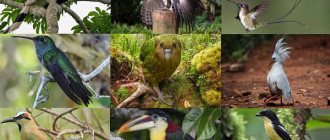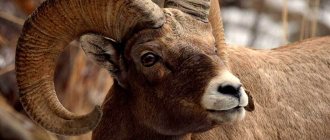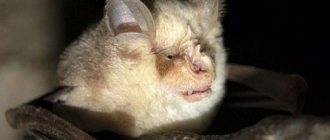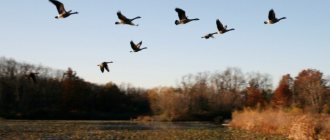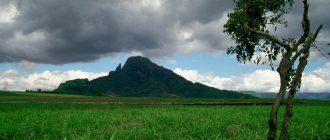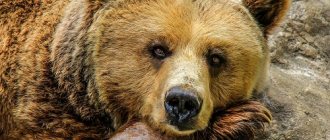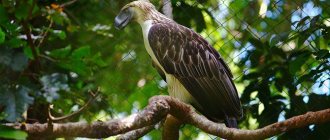The avifauna of Russia is rich and diverse. At least 790 species of birds live here permanently, wandering from place to place in search of food or arriving for the nesting season, migrating with the onset of cold weather to warm countries. But active economic activity of people, deforestation, river pollution and other negative factors are displacing birds from their usual habitats. As a result, more than 100 bird species were on the verge of extinction and were included in the Red Book of the Russian Federation. Let's get acquainted with the rarest of them.
Red-necked Grebe
A waterfowl of the Grebe family. It grows up to 38 cm in length. During the mating season, the coloring on the head and back is black, the chest, front of the neck and sides are red, the belly is white, on the sides of the head, in the area of the eyes, ochre-red tufts of feathers appear, between which there is a black crest, A shiny black “collar” forms at the base of the head. Winter outfit is gray and white. The grebe lives in lake-wetlands and makes nests on the banks of reservoirs or on grassy islands in shallow water.
Conservation status by region:
- Amur region
- Belgorod region
- Bryansk region
- Vladimir region
- Kaluga region
- Leningrad region
- Lipetsk region
- Moscow
- Moscow region
- Nizhny Novgorod Region
- Republic of Crimea
- Mari El Republic
- The Republic of Mordovia
- The Republic of Sakha (Yakutia)
- Rostov region
- Saint Petersburg
- Tver region
- Tula region
- Yaroslavl region
Marbled teal
A small waterfowl of the duck family. The length of its body reaches 45 cm, the wingspan is 71 cm. The color is grayish-brown, with numerous white spots on the back and sides. Teal lives in fresh and salt water bodies that have shallow areas with reeds or shrubs on the shore. The nest is made near the water. This species has not been seen in Russia for more than 30 years.
List of endangered bird breeds
On the territory of our country, one of the safest places of residence for relict (ancient) bird species is the region of the Far East. This is a natural reserve where you can find such unique species and breed names:
- tiny white-eye (jungle of the Amur region);
- maggot and broadmouth (deciduous forests);
- scaly merganser (river estuaries);
- Siberian grouse (taiga);
- pink gull (in the Arctic Circle).
Important! The majestic birds of the Red Book of Russia - the eanger and the black crane - are disappearing without being fully studied. Over the past 10 years, individuals of these species have never been seen in their natural habitat.
little swan
Representatives of the species live only in Russia. Habitat: tundra, Vaigach Island, Novaya Zemlya. Its unique feature is its black beak and snow-white feathers. Individuals feed on plants and catch fish on their own. At the age of 3 they find a mate and live with their partner until death (“swan fidelity”).
Black stork
These are individuals listed in the Red Book of many countries (Ukraine, Belarus). The stork lives in the forest zone of the Urals, in the Far East.
The largest population of the species is located in the Zvanets Nature Reserve (Belarus). The lifestyle of birds has been poorly studied.
Mandarin duck
The bird looks like a small duck. Feature: bright orange plumage. Place of residence: East Asian region.
Representatives of the species prefer to build nests in mountain river valleys. The main reason for the extinction is the spread of raccoon dogs, which destroy nests, and frequent hunting (which is strictly prohibited).
Steller's sea eagle
Representatives of the species are almost never found outside Russia. They can fly out very rarely in winter. This is one of the largest and most massive eagles. Weight reaches 9 kg. Habitat: shore of the Sea of Okhotsk and Kamchatka.
The name is explained by the unique coloring: the wings are pure white. These are predators that feed on fish (salmon) and small rodents.
Pink Pelican
The bird is listed in the Red Book due to its high threat of extinction. Pelicans settle at the mouth of the Volga, on the shore and islands of the Azov Sea. The popular name is the woman-bird.
Pelicans of the subspecies are distinguished by their large size. They don't dive. Food is caught using the beak. The cause of extinction is contamination of soil and water with pesticides and drainage of water bodies.
Burying ground
Belongs to the subspecies of eagles, the hawk family. Habitat: steppes and forest-steppes of Eurasia (eastern Baikal). The name is explained by the fact that individuals bury their dead brothers. In the Red Book, the species has the status of vulnerable, with a sharp decline in numbers.
Among the reasons for the decline in bird numbers:
- loss of nesting sites due to farm work;
- frequent death on electrical poles;
- destruction of the main food (marmots, gophers).
Steppe kestrel
This is a small bird from the falcon family. Has a gregarious character. Almost never found in single pairs. Lives in the steppe strip of Eurasia.
Representatives of the subspecies suffered the most due to economic activities. The chemicals destroy insects, the mainstay of the kestrel’s diet. In the Red Book it has the status of a taxon on the verge of extinction (category 1).
Peregrine Falcon
Belongs to the category of predators. In Russia, lives in the northern regions. Features: identical size to the Hoodie, contrasting plumage, fast flight speed. The speed is 320 km/h, second only to the swift. Nesting sites are rocky cliffs, hummocks of swamps, tall buildings.
The number of the species began to decline rapidly after World War II due to the active use of the toxic chemical DDT.
After its ban and the development of environmental rules, the population is planned to increase. The peregrine falcon in the Red Book has the status of a small species. A special CITES annex prohibits trade in individuals of the subspecies.
The Red Book, in which birds are distinguished by their rare distribution and threat of extinction, is a legal act that guarantees the protection of the breed. From hunting and other destructive human activities. To preserve rare species, reserves have been created throughout the country. Watch a video about birds listed in the Red Book. There is not only a general book of Russia, but also Red Books of regions, for example, Tver.
Yellow-billed heron
A medium-sized bird of the heron family. The body length usually does not exceed 68 cm. The plumage is white, the beak turns yellow during the nesting period, and the head has a small crest of dissected feathers. The yellow-billed heron makes its nest in reed thickets or on trees growing on rocky shores. It is extremely rare in Russia; it nests on the Rimsky-Korsakov Islands.
Bottom line
Thus, a huge number of bird species are included in the Red Book of Russia. Some of them live in small populations and can be observed in different parts of the country, and some birds have been little studied. Unfortunately, a certain number of species are on the verge of extinction and it is almost impossible to preserve them on the planet. There are many reasons for the disappearance of birds. This includes water pollution, destruction of wild areas, and poaching. At the moment, the maximum number of bird species is under state protection, but this is not enough to preserve and restore the populations of many rare bird species.
Pink Pelican
A large waterfowl with sparse plumage. Belongs to the Pelican family. The body length reaches 1.8 m, the wingspan is up to 3.8 m. The beak is long, up to 47 cm, the large throat sac can stretch greatly. The color of an adult bird is predominantly white, with a pale pink tint; during the mating season it becomes brighter, acquiring red-yellow shades. The pelican lives in river deltas and makes its nest right on the ground.
white-naped crane
A bird with dark gray plumage, growing up to 190 cm in height. Belongs to the Crane family. The crane's legs have a pinkish tint, the head and areas near the neck are white, there are no feathers around the eyes, and the skin in these places is red. The crane settles in swampy meadows, lake basins and river valleys. It builds a nest on the edge of a swamp, in tall grass, and can use it for several years in a row.
Bermuda typhoon
The second rarest seabird, almost extinct in the 17th century. Since 1621, the Bermuda typhoon was considered extinct forever, and only in 1951, on the rocky islands of Castle Harbor, several nests of this bird were discovered. The population was restored quite well, but Hurricane Fabian in 2003 almost completely destroyed the nesting grounds of the Bermuda typhoon. Today the species is again considered endangered.
Fish owl
A large bird of prey of the owl family, living in eastern Russia, as well as in China and Japan. Inhabits forests, chooses places near rivers, since it feeds mainly on fish. Nests in large hollows. The body length of the eagle owl reaches 70 cm, the wingspan can be up to 1.9 m. There are feather ears on the head. The color is brown, with dark streaks, and a small white spot is noticeable on the throat.
Mandarin duck
This is a small duck with a characteristic orange color. She lives in the East Asian region, mainly in the Sakhalin region, on the Amur, etc.
Mandarin ducks choose mountain rivers to live because they float and swim well. Unlike other species of ducks, mandarin ducks do not like to dive and do this only if they are injured.
Another interesting feature of the birds is that they love to sit on rocky ledges and tree branches, while other ducks rest in the water.
In our country, they are dying out because of raccoon dogs, which often destroy their ducks, as well as because of hunting, although today it is completely prohibited.
Jack
Photo: Jimfbleak/Wikimedia Commons
A bird of the Bustard family with a body length of up to 75 cm and a wingspan of up to 1.55 m. The main tone of the plumage of the upper body is sandy, the belly is white. There is a light gray crest on the head. During the courtship dance, the male spreads his tail and feathers on his head and neck. Jack lives in deserts and semi-deserts. Breeds in separate pairs.
Redshank
Photo: Ken Billington/Wikimedia Commons
A small migratory bird of the snipe family, up to 20 cm long. The wingspan does not exceed 41 cm. The beak of the redbreast is long and bent. The main color background in winter is gray-white, with ripples on the upper side of the body. During the mating season, the plumage turns bright red-brick tones, the wings acquire a brown tint. The bird lives in the Siberian moss-lichen tundra; it makes its nest in elevated areas, lining the hole with lichens and willow leaves.
Representatives of the meat and egg direction
Some breeds are also known in agriculture in Russia and the CIS, which we will consider in more detail.
- Mirror ducks have almost completely white plumage with wings that shimmer with the shine of a mirror. The breed is distinguished by a wide, round chest with a wide and long body. In general, one duck lays up to 135 eggs in one year.
- Saxon ducks, despite their orientation, have beautiful and memorable colored plumage. In terms of weight, they are voluminous and dense, have a regular body and strong bones. A characteristic feature of the drake is a dark blue metallic tint of color. The breed is considered productive with high egg production.
- Khaki Campbells can have different plumage options: from sand to black. Their meat has a delicate and pleasant taste, but ducks can hardly be called good brood hens. Campbells are loved for their calm and peaceful behavior and mobility.
Red kite
A bird of prey with a wingspan of up to 2 m. It belongs to the hawk family. The body length reaches 72 cm, the beak is sharp, curved down, the tail is long, with a fork-shaped notch. The general color tone is reddish-brown, the head and neck have a light gray tint. The kite lives in mixed and deciduous forests near open areas. It makes its nest in a tree, at a height of up to 20 m, and uses it for many years.
Saker Falcon
Bird of prey of the falcon family. It grows up to 57 cm in length, the wingspan reaches 1.3 m. The color of the plumage usually contains brownish, brown and whitish shades. In different individuals, even within the same population, coloring can vary significantly. The saker falcon lives in forest-steppes, deserts and mountain steppes, rising to a height of up to 4700 m above sea level. Occupies empty nests of other birds on rock ledges and steppe hills. Hunts on the ground and in flight, attacking small mammals and birds.
Roller
Migratory bird of the roller family. The length of its body does not exceed 34 cm. The color is dominated by bright greenish-blue colors, the back and shoulder wings are reddish. The roller lives in the steppe and forest-steppe zones, choosing sparse old-growth forests, ravines and steep slopes on river banks. The nest is made in a hollow tree or in an empty hole, usually without covering it with anything.
Sumatran ground cuckoo
The Sumatran cuckoo is a fairly large land bird that lives in the jungles of southern Sumatra. It was discovered in 1879, but the rare shy bird was never studied. Only occasionally was she encountered by researchers and captured by automatic hidden cameras. In 2007, we managed to record her scream. That's all that scientists know about the ground cuckoo. The number of these birds is about 250 individuals.
